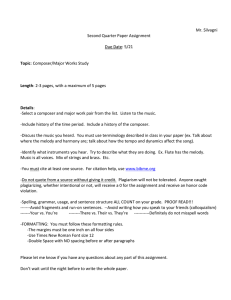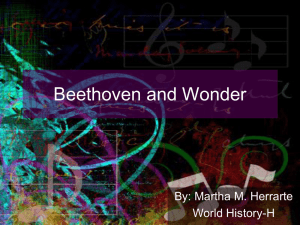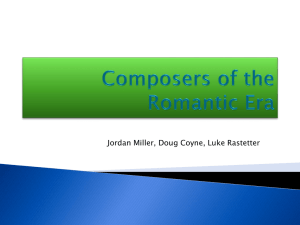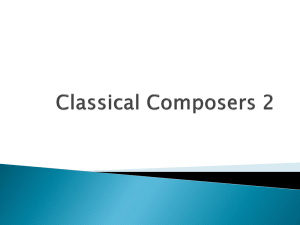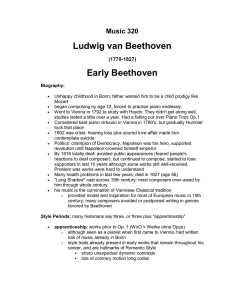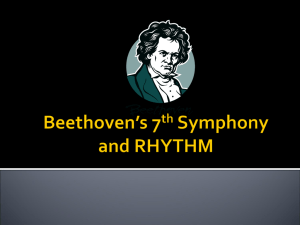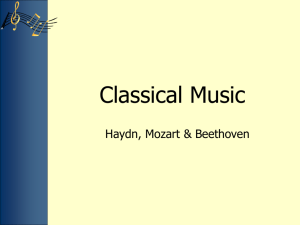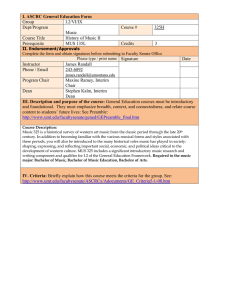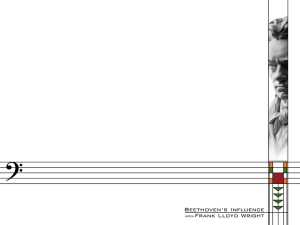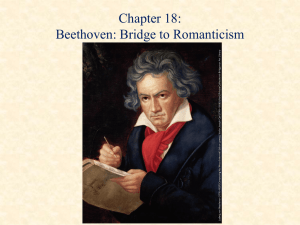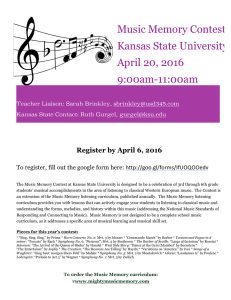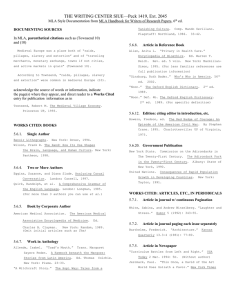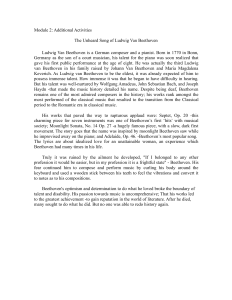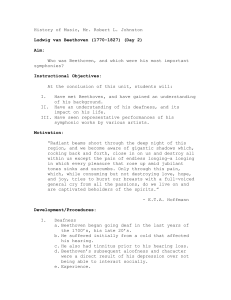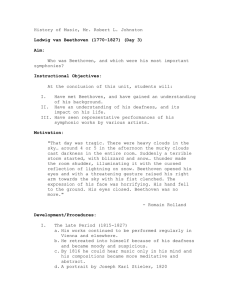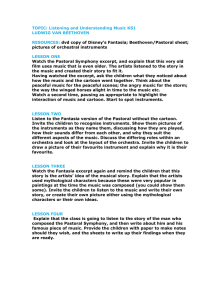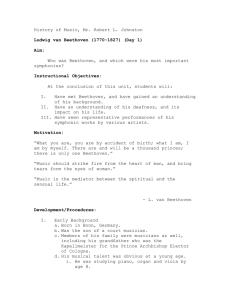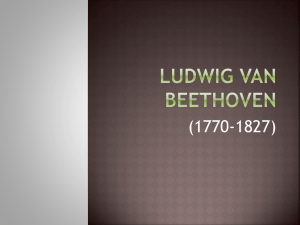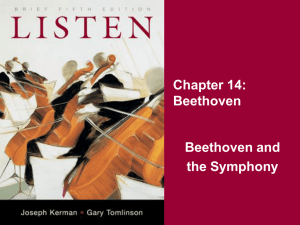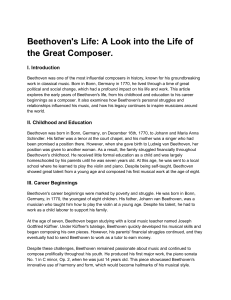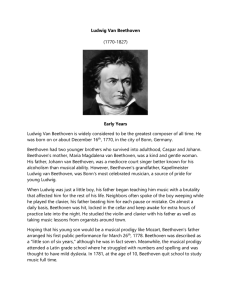The Romantic Era
advertisement
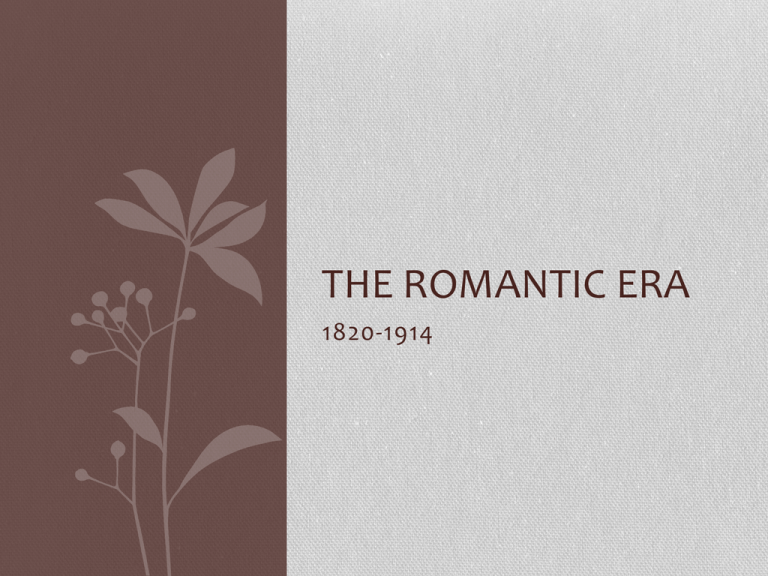
THE ROMANTIC ERA 1820-1914 CONTEXT • Musical period defined by historical events • 1820: Napoleon’s subjugation of Europe ends (French Revolution) • Art is shaped by move towards democracy, away from aristocratic privilege • 1914: World War I begins • Society felt a need to “end artistic expression that originated a hundred years ago” • Other important historical events: • 1878: Joseph Swan, England, invents first working light bulb • (1879: Thomas Edison, America, improves the model) • 1848-1849: Widespread European Revolutions • Political unrest; reactionary forces victorious and revolution collapsed, little influence (aside from abolishing serfdom in Austria and Hungary.) • Over 50 countries affected; Tens of thousands of people were killed Romanticism • Term originally from literature, meaning “shrouded in mystery” and relying more on character’s emotions than rational thought • EMOTION is key • “Vivid expression, passionate state of mind” • People wanted to express THEIR OWN experiences! • “The era of the individual” • Program Music • Music that tells a specific, concrete story • Example: Beethoven Symphony No. 5 in C minor– “Fate” (mvt 1) Romantic Musical Characteristics • Melodies/Themes are asymmetrical • Temperamental > Balance • Harmonies suggest emotional ideas • Dissonant chords, unexpected modulations • Increase in the use of MINOR tonality for entire pieces of music • Example: Beethoven Piano Sonata No 8 in C minor , “Pathetique” • C minor was a difficult and avoided key in Classical music. • Beethoven used it to express extreme intensity, and “sublime” musicality • Creative musical ideas to bring unity to incredibly long works • “Music wore its heart on its sleeve” Ludwig von Beethoven • Usually considered transitional from Classical to Romantic eras. • Studied under F. Joseph Haydn • Virtuosic pianist, incredibly influential composer, dramatic conductor and performer • Lost hearing, continued work with music • “Curse of the Ninth” (Symphony No. 9 in D minor, “Chorale”) from “Ode to Joy” 6:36 – 10:55 (listen for modulation and style change!) 1770-1827 Beethoven’s Life Story 1770-1827 • Both father and grandfather were well-known musicians (singers, pianists, violinist) • One of three children to survive infancy (out of seven total) • Ludwig had obvious musical talent at a young age – Father attempted to copy Leopold Mozart’s success at family performance with child prodigy. • Only performed from 1778-1779, then began studying composition • Had volunteered and thusly been hired to compose and play organ (for an important court in Germany)before he was a teenager! Introduced to Enlightenment Ideals. • Went to Vienna (in the hopes of studying with Mozart), but returned home when mother became ill and passed away. • Played viola to supplement family income • Traveled back to Vienna and London to continue musical studies • Continued to mature musically, wrote opera, piano sonatas, string quartets, symphonies… also taught music as an adult. • Suffered “tinnitus” at age 26, avoided conversation, angry and reclusive. • Fell in love with various women, never married because of “class” • Lived alone in Vienna to overcome depression, wrote “Heiligenstadt Testament”, now studied as a great example of Romanticism and emotional expression. (Overcome ailment to “complete artistic destiny”) • Struggled with illness later in life, while writing symphonies 7-9 • When brother died (1815), Ludwig took custody of his nephew. Beethoven Listening Comparison • String Quartet No 16, op 135 in F, mvt II and III • Six movements (longer) • Does seem comic at points, but with more intensity • Larger variety in emotional expression between movements • The Romantic Symphony – Narrorated! • Symphony No. 5 – “Fate” (mvt 1) • Listen for vocabulary words you know! • http://www.youtube.com/watch?v=MzXoVo16pTg
